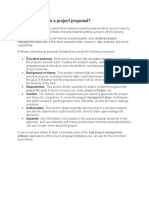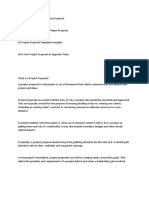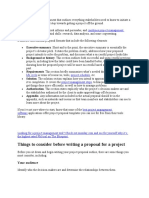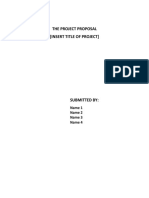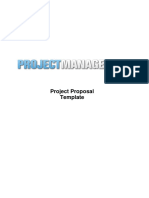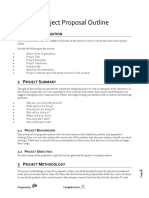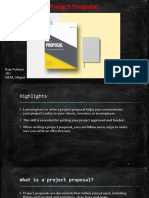0% found this document useful (0 votes)
88 views13 pagesHow To Write A Project Proposal
The document discusses how to write a project proposal including what a project proposal is, types of project proposals, key questions to consider when writing one, and outlines the typical sections of a project proposal including an executive summary, project background, project approach, and free project proposal template.
Uploaded by
Crisanto ZaballeroCopyright
© © All Rights Reserved
We take content rights seriously. If you suspect this is your content, claim it here.
Available Formats
Download as DOCX, PDF, TXT or read online on Scribd
0% found this document useful (0 votes)
88 views13 pagesHow To Write A Project Proposal
The document discusses how to write a project proposal including what a project proposal is, types of project proposals, key questions to consider when writing one, and outlines the typical sections of a project proposal including an executive summary, project background, project approach, and free project proposal template.
Uploaded by
Crisanto ZaballeroCopyright
© © All Rights Reserved
We take content rights seriously. If you suspect this is your content, claim it here.
Available Formats
Download as DOCX, PDF, TXT or read online on Scribd
/ 13


